
Citizen Trees is an original project by the theater company Organismo Teatro. It consists of an audio-walk experience in which citizens, through a web app, can listen to the sounds and stories of the oldest and most heritage-rich trees in our surroundings. This is a transdisciplinary initiative that blends sound art, theater, arboriculture, and technology, positioning itself within the field of new media.
We work with trees that inhabit urban areas, seeking to reclaim their presence and give them a voice amid concrete and in the midst of hectic, relentless cities. Someone, at some point, chose to plant them there—so listening to the trees in the city also means listening to those who once decided to plant them. Citizen Trees is also an act of remembering—through sound—the history of people doing something for the trees in our cities, and the trees, in turn, doing something for those societies.
Our project has already materialized in three editions: The first was developed in El Bosque (2023), one of the districts with the lowest number of trees in the Metropolitan Region. The second took place in Santiago’s Parque Forestal (2024), focusing on the oldest and most historically significant species in the area. The third edition was carried out in Parque Quinta Normal in Santiago (2025), involving work with the “parents and grandparents” of many other trees across the city—thus, the oldest in the Metropolitan Region. These editions have firmly established themselves among the public, generating a significant and positive impact within the communities.
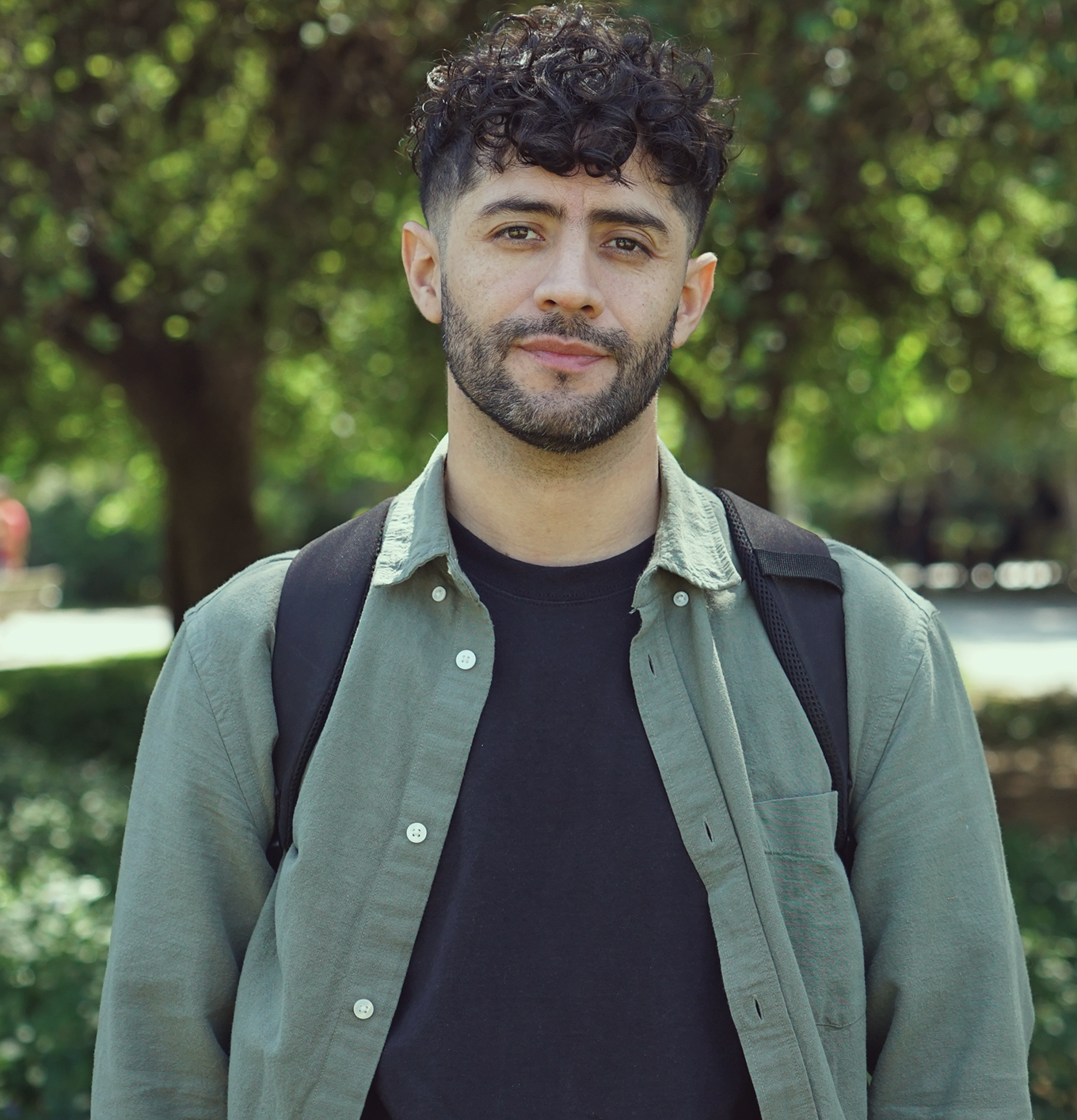

Emerson Velásquez
Director
Actor, stage director, and cultural manager with training from Universidad Bolivariana (BA in Arts), Universidad de Chile (MA in Theater Direction), and Universidad Austral (Diploma in Cultural Management). Since 2010, he has developed transdisciplinary cultural projects that intertwine public art, memory, science, and nature, with a strong focus on civic participation and local engagement. His experience ranges from artistic creation to the formulation, management, and sustainability of initiatives funded by both public and private institutions. He currently leads Citizen Trees, an innovative project that combines art, technology, and natural heritage to connect citizens with the vital and sonic history of Chile’s heritage trees. His work is distinguished by an inclusive, community-based, and long-term approach that understands art as a transformative tool for cultural and social development.
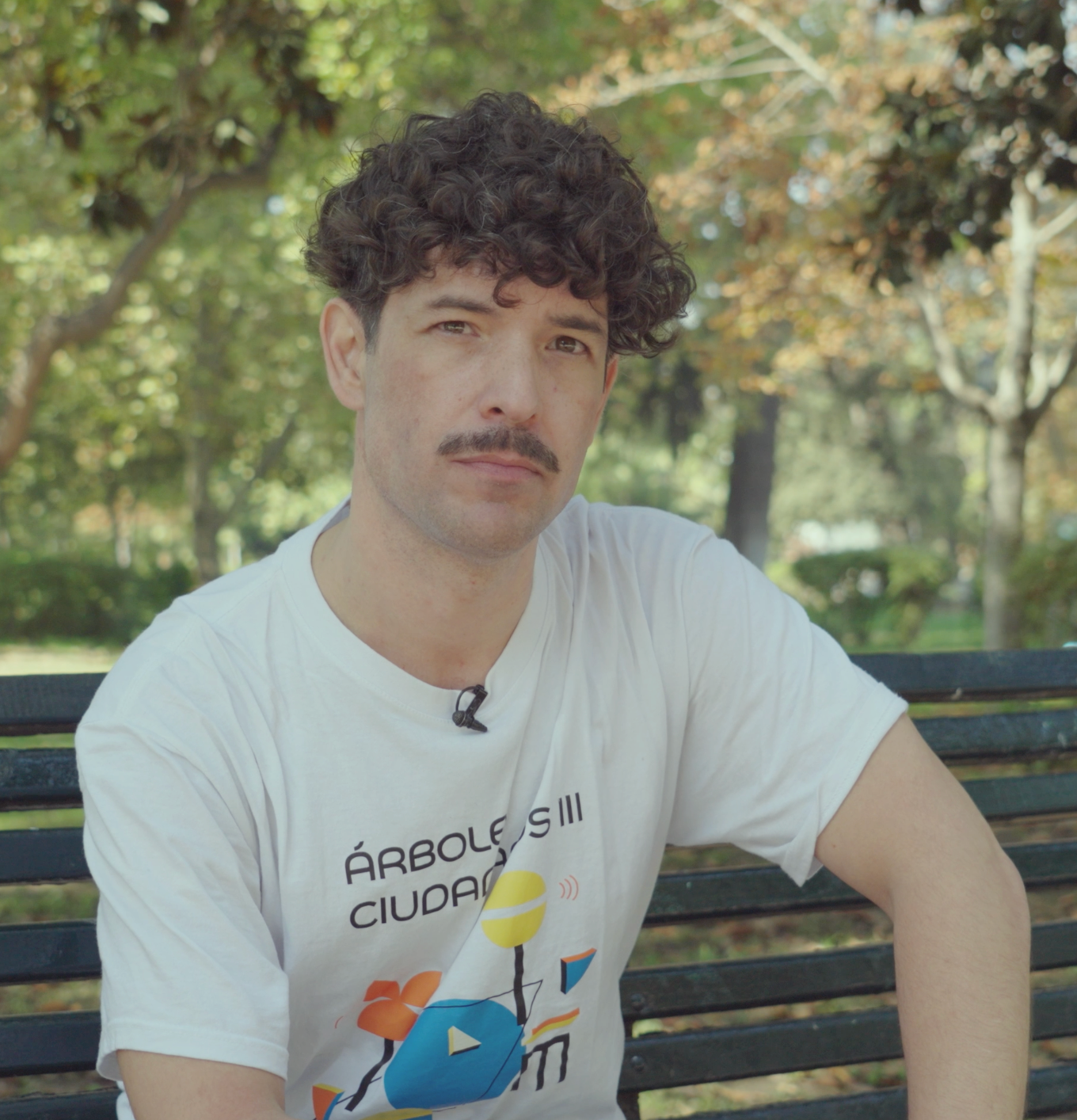

Nelson Castro
Management and Coordination
Actor and BA in Performing Arts from Universidad de Las Américas (2014), Nelson is a manager and creator at Organismo Teatro, where he leads creative processes focused on theater and public art. Since 2014, he has built a strong track record in theater pedagogy, working in a variety of educational contexts. In Citizen Trees, he co-leads the initiative alongside director Emerson Velásquez, playing a key role in the management and implementation of its three editions—El Bosque, Parque Forestal, and Quinta Normal. His work focuses on territorial coordination, the design of mediation plans, and strengthening pedagogical and community links, integrating art, education, and civic participation into meaningful cultural experiences.


Claudia Palominos
Press Management
Journalist and BA in Social Communication from the Pontificia Universidad Católica de Valparaíso, Claudia has over 15 years of experience in content creation and communications within the field of culture and the performing arts. She has been a key contributor to all three editions of Citizen Trees—El Bosque, Parque Forestal, and Quinta Normal—successfully positioning each one within national media outlets. Her expertise has been essential in bringing visibility to the project and generating a communications strategy consistent with its artistic, territorial, and civic identity.
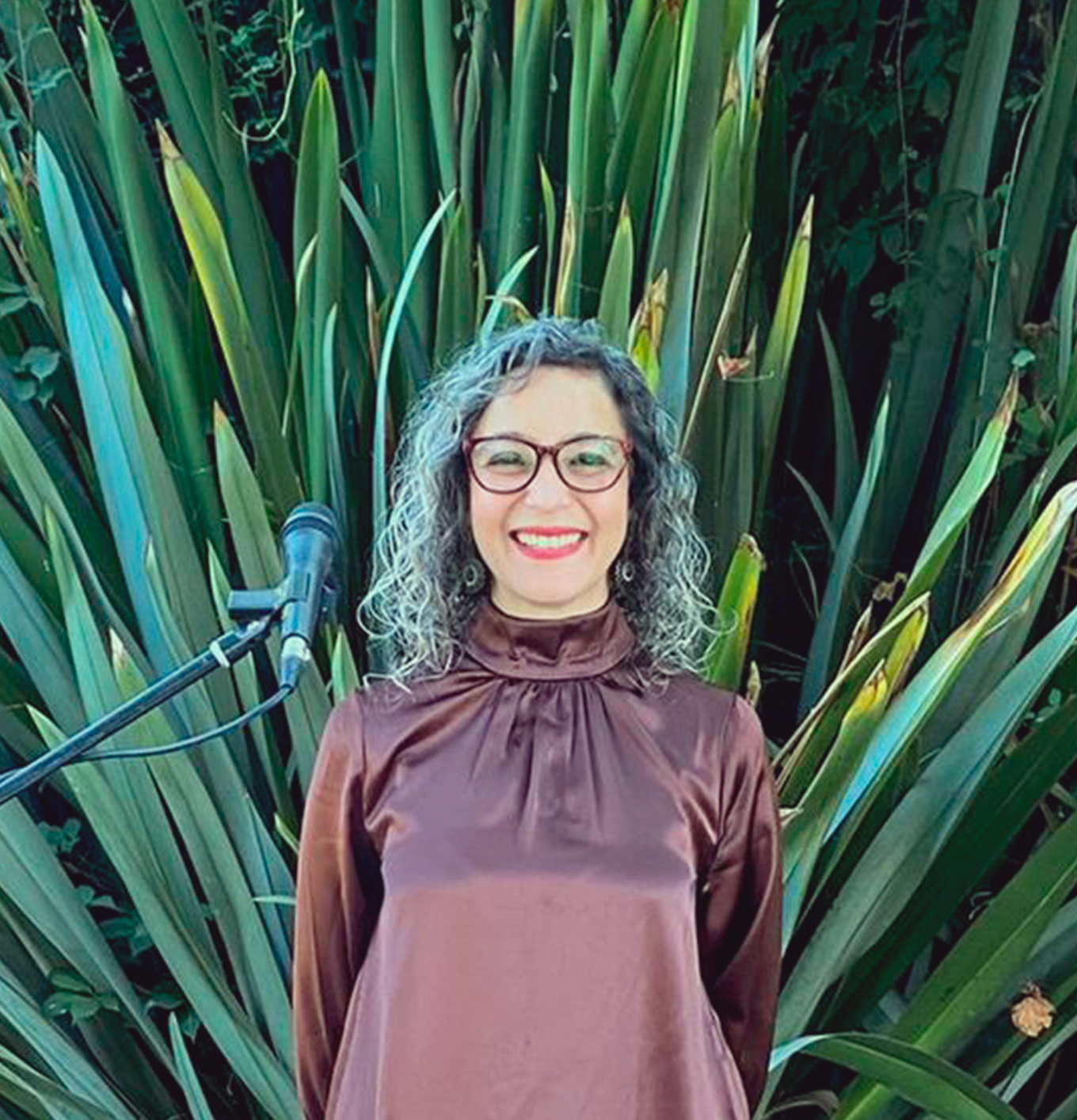

Gisela Salazar
Guided Experience Coordination
Professional actress and theater educator with over two decades of experience in designing and implementing educational processes through theatrical tools. She has worked extensively in educational settings, leading workshops for children, youth, and teachers, using play, creativity, and active listening as tools for learning and transformation. In Citizen Trees, she coordinates guided mediations and tours, where her playful and sensitive approach opens up spaces for deep connection with the trees, the environment, and the collective experience.
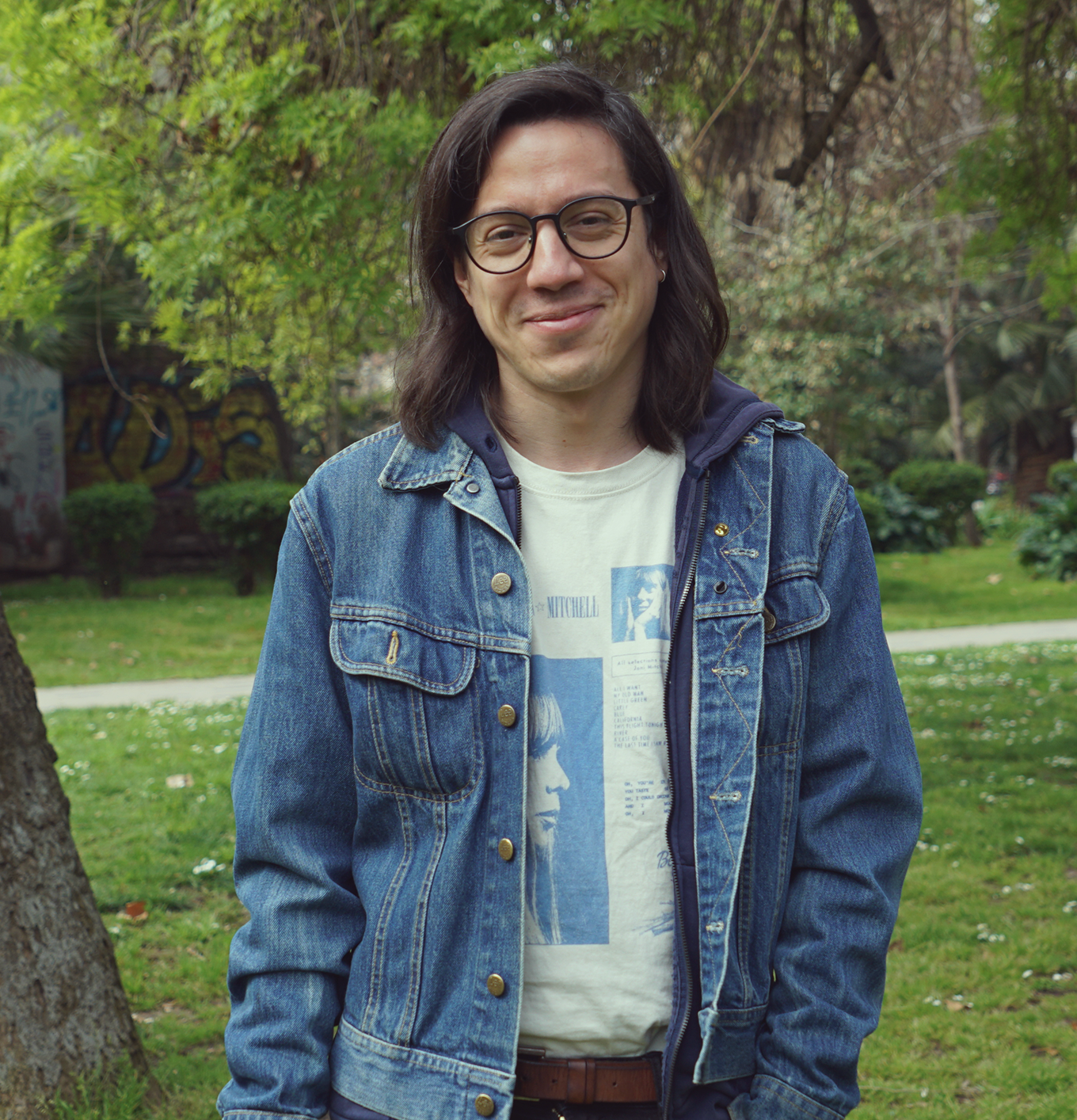

Matías Serrano
Sound Art
Matías Serrano is a sound artist and academic with training in Media Arts from Universidad de Chile. His work explores the relationship between sound, technology, and the environment, combining mechanisms of sonic experimentation with collaborative practices. In Citizen Trees, Matías has created the sonifications of the trees—sound metaphors that translate each tree's unique features and characteristics into original compositions. These metaphors invite citizens into a deep sensory experience that reconfigures their everyday perception of the urban landscape through sound, fostering new forms of dialogue between people and the arboreal environment.
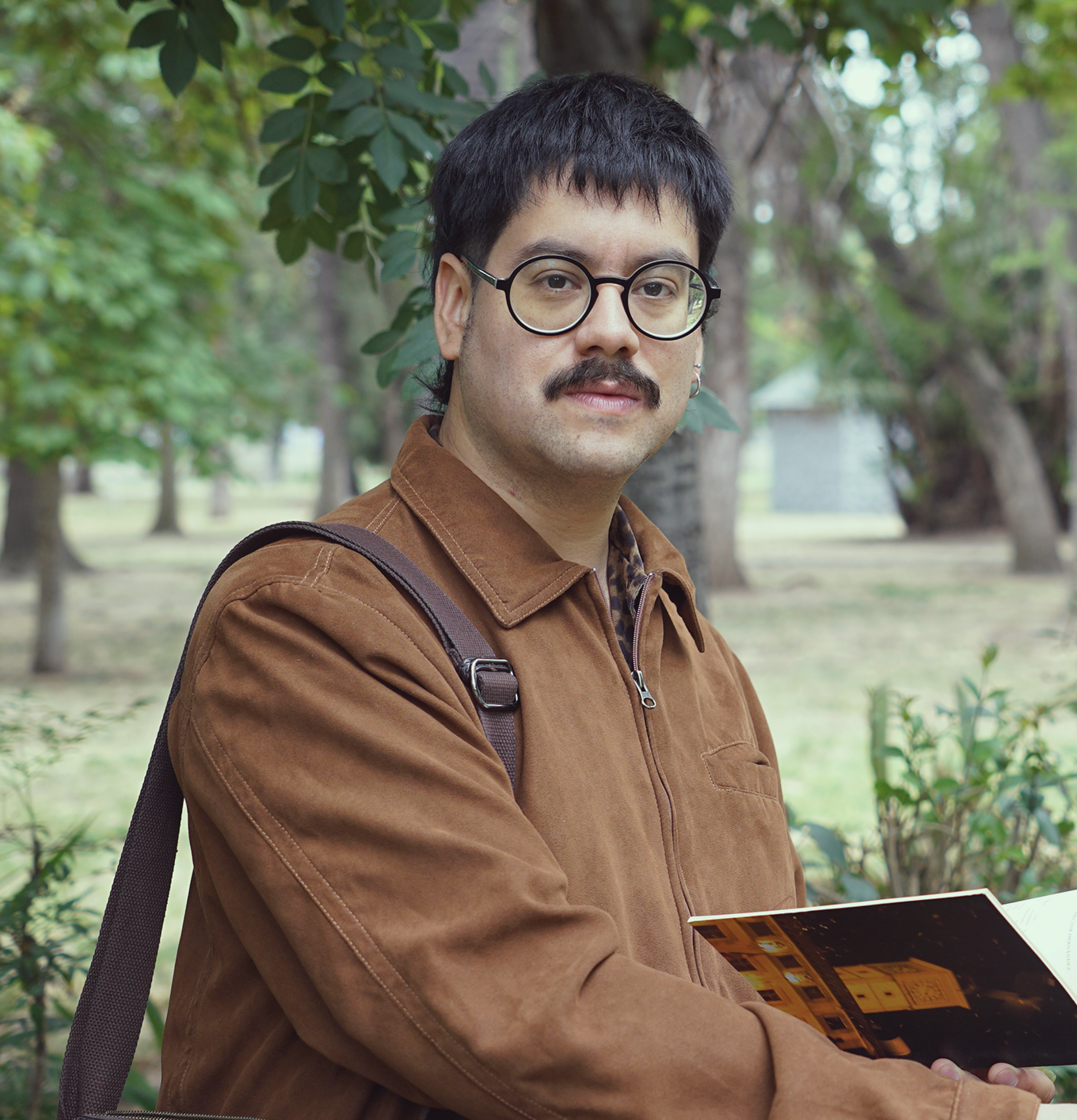

Rafael Pastene
Sound Design
Rafael Pastene is a musician and composer dedicated to sonic creation across multiple languages, with a particular focus on the performing arts. His career is characterized by a continuous dialogue between music, the body, text, space, and image, exploring collective creation within theater, performance, and dance. Since 2019, he has been a member of Organismo Teatro, where he takes part in research-driven stage processes in which music does more than accompany—it proposes, challenges, and transforms. In all three editions of Citizen Trees, Rafael has been responsible for assembling the audio narratives of the trees, weaving together diverse voices and soundscapes to create stories that resonate deeply with both urban and natural settings.
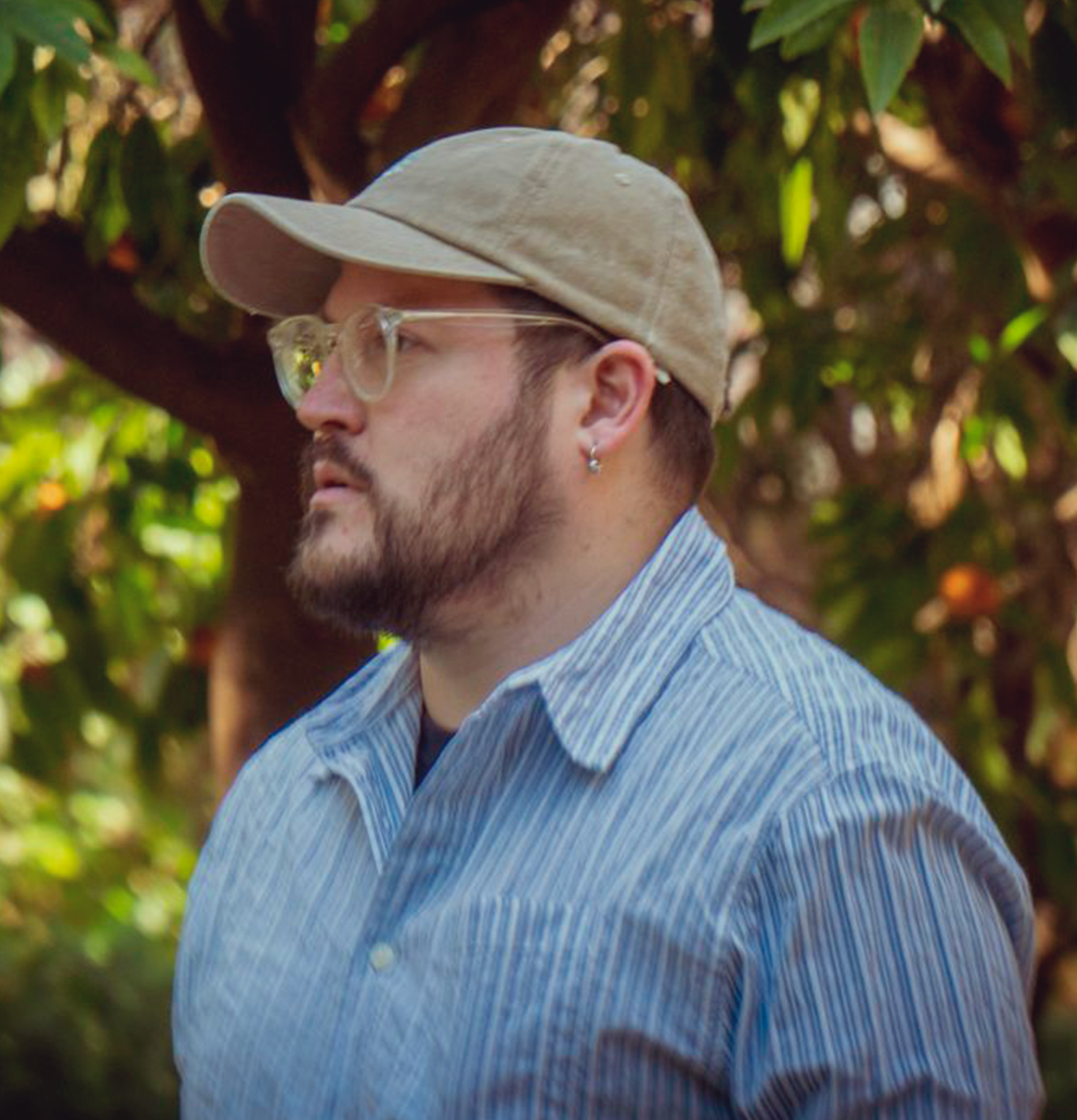

Rodrigo Salinas
Design & Development
Developer and Digital Animator with over 10 years of experience in creating digital graphic content across various formats. His career includes a specialization in character design and animation, to which he has recently added strong training in user-centered interface design (UX/UI), having completed the Expert Master's program at CICE in Madrid. In Citizen Trees, Rodrigo is responsible for designing and developing the web app for each edition of the project, creating digital environments that are accessible, intuitive, and aesthetically connected to the artistic and sensory experience we aim to deliver.
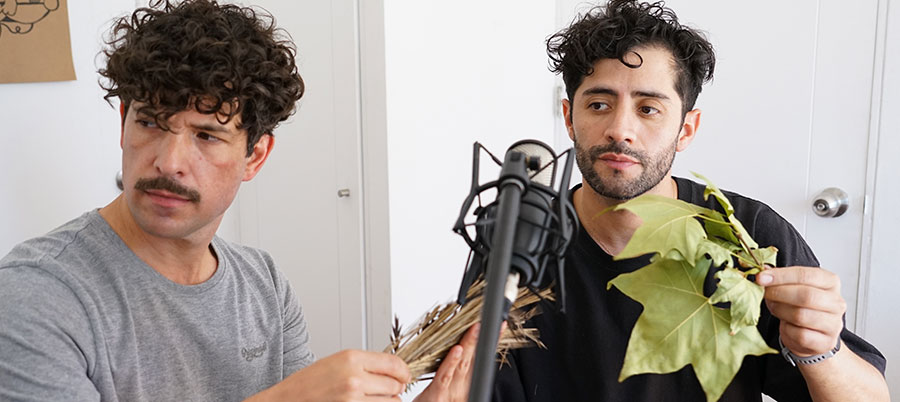
In each edition, we carry out extensive research aimed primarily at recovering the traces left by each tree—working under the notion of trees as witnesses and integral parts of the historical memory of our society.
First, we develop a process grounded in arboriculture. Through exploration and auscultation of the species present in each territory, we select the tree communities that will form part of the audio-walk experience. In parallel, we work with the concept of the “trace,” documenting every piece of information each tree may share with us—assembling a kind of cartography that maps the life journey of each species.
“Trees are time made visible; in their habits and trunks, we can revisit the history of societies.”.
We then gather historical background information on each area we intervene in. All of this is documented in a series of botanical records that serve as a foundation for the following creative process.
Next, we record the electrical stimuli of each selected citizen tree. Through a sonification process, we transform this data into the unique sound or “voice” of each tree. Later, we create a series of narrative stories inspired by each tree species. These tales are based on the voices, historical background, and individual traces of each tree, and are eventually interpreted by different members of the community.
“We aim to produce the sound of the trees in our society—allowing them to be the protagonists, the ones who tell their own stories.”.
Finally, we assemble each audio narrative, bringing together two realms: on one hand, the vegetal voice; on the other, the human voice—merging in a kind of interdimensional dialogue.
These human voices, placed in service of the trees, may become powerful tools for fostering possible dialogues with the vegetal world—with the trees of our society, with the citizen trees.
“An old cork oak in Parque Quinta Normal says: ‘I can’t understand you. What could you mean? How much longer until we understand each other? I wish we trees could have that privilege—the one of words—to play with you, releasing them, letting them fly into the air and watching them fade away on cold winter afternoons.”.
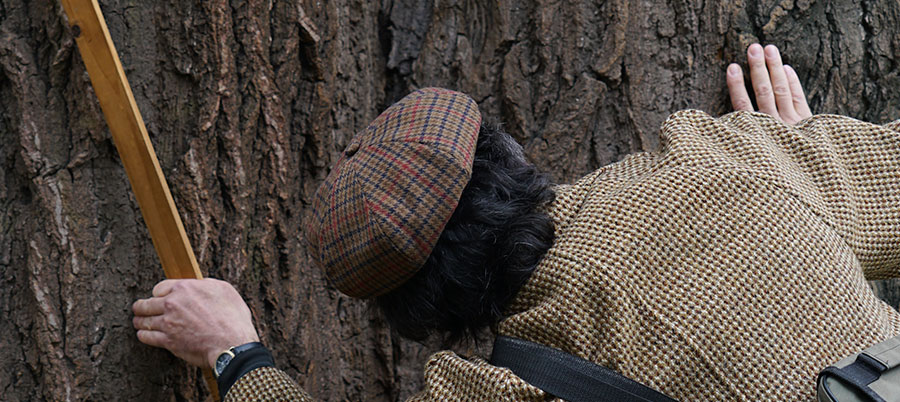

What is Árboles Ciudadanos?
We often say it’s a theatrical, auditory experience—where you can listen to the sounds and stories of the trees around us.
Yes, that’s true.
But, Árboles Ciudadanos is also an invitation to lend an ear to the trees of our society.
To listen to a tree is to take responsibility—responsibility for our roots, our history, our memory.
What are trees, if not all of those things?
Listening to a tree is allowing ourselves to be questioned by the tree itself.
How many roots have we wanted to sever?
How much history have we wished to burn?
How much memory have we longed to forget?
We know well that when a tree is cut down, an entire history falls to the ground.
We know well that when a tree dries up, memory fades away.
We know well that when a tree burns, all our roots turn to ash.
The ashes. The fire.
It seems sadly inevitable to speak of fire when we speak of trees.
But it’s also true that fire forces us to imagine, to dream of the day when the fires consuming every tree may finally be extinguished. Sometimes, through fire, we can become someone else—something else.
Who ever said that trees were afraid of fire?
Have you ever seen a tree run from the flames?
It’s not the fire that roars—it’s the tree that roars when it burns.
A tree knows that here, in this narrow strip of land, life is always lived close to fire. Sooner or later, everything could burn. Trees stop fearing the embers. They learn to sprout with the fire. Because even if we don’t see them, the ashes always remain—waiting for the wind to one day rekindle them. I don’t know why, but it seems, and everything suggests, that in this land there have always been more embers than roots. Here, the fires never go out.
If trees are history, then here, history turns into smoke.
Perhaps that is the inescapable fate of a Chilean tree: to live forever on the verge of flames.
Perhaps it is the fate of trees all around the world.
Do the trees have to disappear for the fires to cease?
When did we climb down from the trees only to turn them into bonfires?
To listen to a tree may also be to hear the roar of the scorching fire of history—demanding that we extinguish all the flames.
But there is always hope for the trees, because we know that after the fire—everything blooms. Just like the citizen trees of all our territories.

In each version of the project, we have organized guided tours and mediation activities with different communities.
In El Bosque, we conducted a series of guided tours with neighbors as well as students from schools with high vulnerability indexes in the municipality.
We also coordinated mediated tours for visually impaired participants, invited by Fundación Luz.
In Parque Forestal, we invited older adults, supported by the National Service for Older Adults (SENAMA) and CEDIAM. Additionally, in collaboration with the National Museum of Fine Arts, we organized mediation activities with children and the general public.
Similarly, with the support of Fundación Luz, we held sessions with visually impaired individuals.
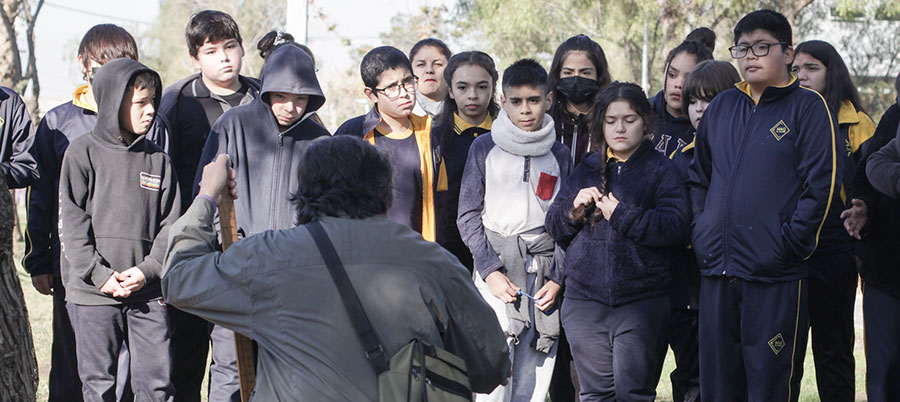
Finally, in Quinta Normal, in collaboration with the Museum of Memory and Human Rights, we invited audiences from the museum itself and teams from various memory sites in the Santiago Metropolitan Region, organizing tours based on themes of memory, human rights, and nature. Likewise, we held guided tours with the general public, students from emblematic high schools in Santiago, neighbors from the Yungay neighborhood, migrant communities, and blind users with Fundación Luz.
Our intention is to sensitively bring our creative processes closer to communities, while carefully introducing topics and concepts from the diverse disciplines involved in the project’s creation: arboriculture, ecology, sound art, literature, and philosophy. In this way, we open spaces for dialogue, debate, and civic reflection around public art strategies linked to environmental work, while simultaneously stimulating interest in transdisciplinary artistic practice and its substantial contribution to the care and protection of ecosystems.
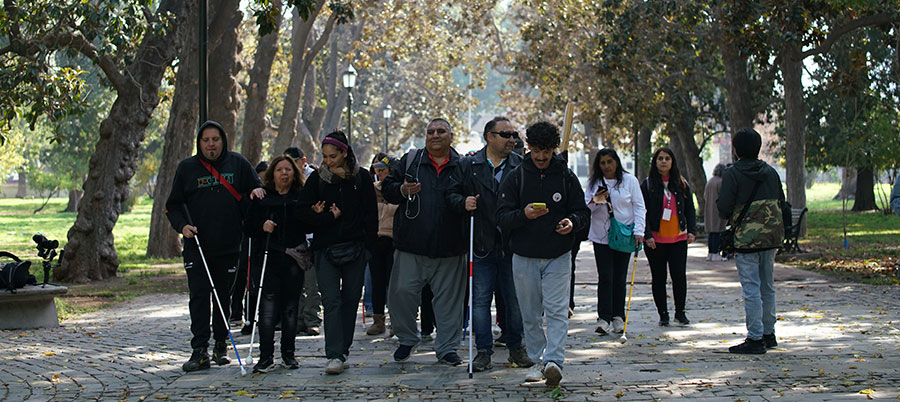

Each version of our project involves the deployment of different mechanisms that have allowed us to achieve a positive and significant impact with the public.
On one hand, we implemented a press management plan involving journalists specialized in culture and environment, positioning each version in both local and national media outlets.
Similarly, we have worked through strategic alliances with various organizations, whether governmental, municipal, environmental, cultural, or related foundations and entities aligned with our work, deploying joint collaborations that have strengthened the impact and dissemination of each initiative.
On the other hand, we have collaborated with territorial organizations, neighborhood groups, and residents in each territory, involving them in the creative and management process of each initiative.
In doing so, we have contributed to the active participation of communities in artistic processes related to public art, strengthening their relationship with their own surroundings, fostering a sense of belonging to their natural heritage, and re- signifying their everyday spaces.
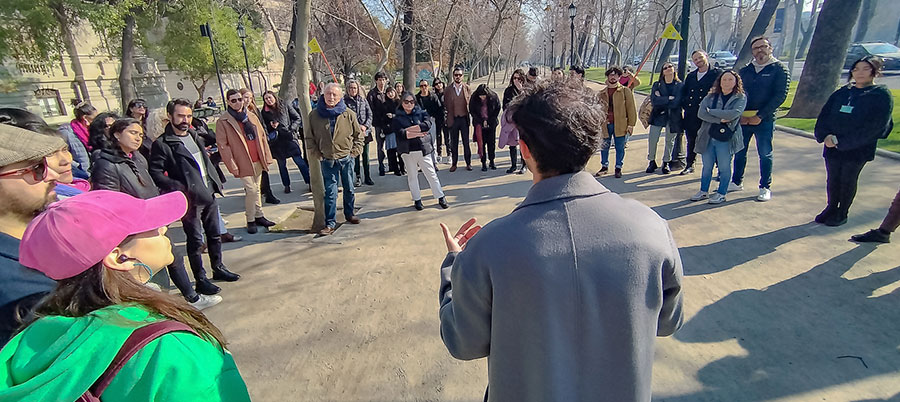

Since its inception, Citizen Trees has been experienced by a diverse audience exceeding 9,000 visitors.
In El Bosque, we reached over 3,300 attendees, including students from high-vulnerability schools, people with visual disabilities, neighbors, and the general public.
In Parque Forestal, approximately 4,059 attendances were recorded, with notable participation from older adults, children, students, visually impaired people, and general audiences.
Finally, for Quinta Normal, we estimate to reach over 5,000 attendees, including educational communities, diverse citizens, and people with disabilities.
These data have been recorded using tools integrated into each application, allowing us to monitor the territorial impact of each version.
Moreover, our audio tours remain permanently available in their respective locations, accessible to anyone who wishes to listen today or in the future.
“We hope the trees that inhabit each territory remain there forever, standing tall as witnesses to the history of their own communities. May they never be taken down by the relentless city. And may Árboles Ciudadanos never become merely a memory of what once existed there.”.
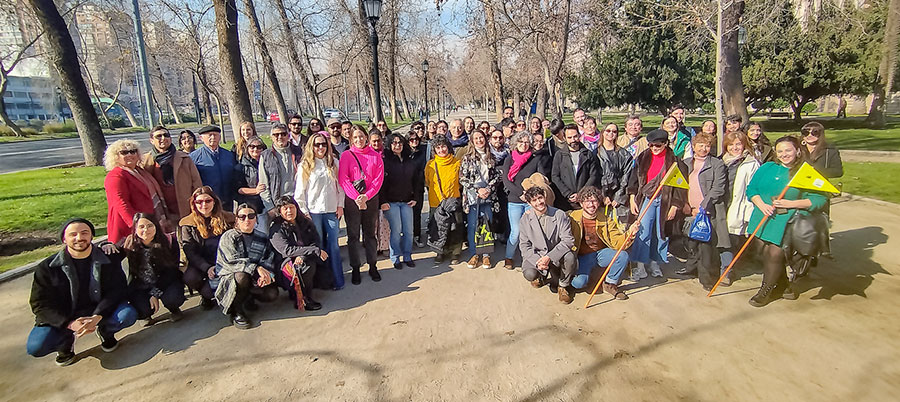
Projects


The project was funded by the Metropolitan Regional Development Fund (FNDR 2022), with the collaboration of the Municipality of El Bosque and the support of Fundación Luz.
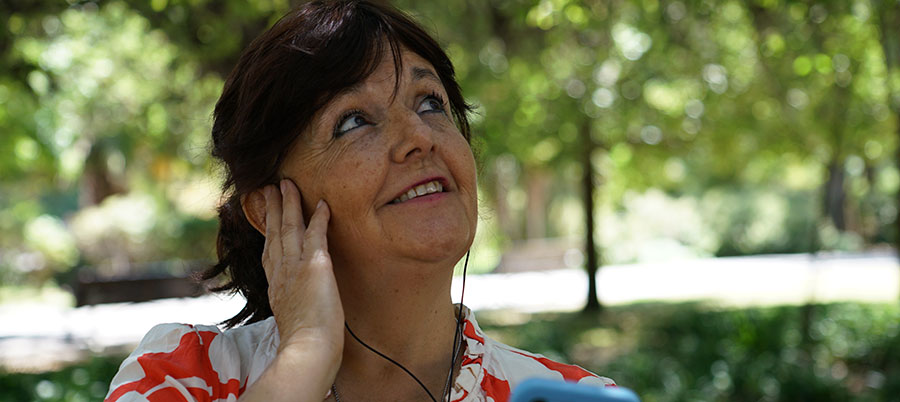


The project was funded by the Metropolitan Regional Development Fund (FNDR 2024), with support from the National Museum of Fine Arts, the Municipality of Santiago, and Fundación Luz.
“Memory? Memories?
In the head? No.
How could we keep memories in the head?.
Where do we store memories, then?
Right here—everywhere—like a pile of bark.s. That’s where we trees store memories. Layer upon layer.
Sometimes, memory isn’t preserved like a series of images—
it grows as a layer, blooming into bodies, into trunks,
into trees—like a cluster of bark.”

This time, we worked with some of the oldest trees in Santiago, examining species that are the ancestors of many trees planted in other urban public spaces across the city.


Given the heritage value of the trees being featured, we are working with a cast of actors and actresses who are themselves considered part of Chile’s cultural legacy, whose voices resonate deeply with the character of each tree. Among them: Héctor Noguera, Luz Jiménez, Naldy Hernández, Rosa Ramírez, Elsa Poblete, Tito Bustamante, Alejandro Trejo, Rodolfo Pulgar, and Paulina Hunt.
This version of the project is funded by the Ministry of Cultures, Arts and Heritage (Fondart 2024), with support from Fundación Reforestemos, endorsements from Sernatur, the Ministry of the Environment, the National Cultural Heritage Service, collaboration from the Museum of Memory and Human Rights, and Fundación Luz.
“Trees are also our memory; their bark holds the record of who we’ve been— trees never forget. So it’s not just about giving a tree the voice of an actor or actress; it’s about placing ourselves in conversation with memory— entering into dialogue with our own history.”
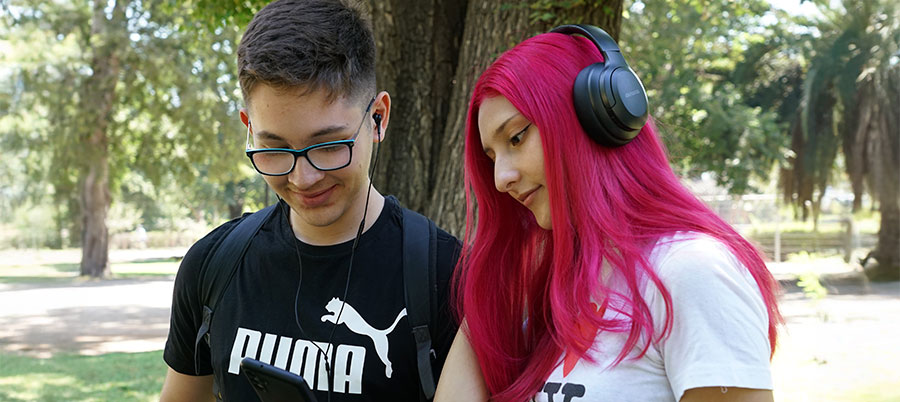
Support our project
Your donation is a seed that allows us to keep growing. The resources we receive are directly allocated to:
- Maintaining our current experiences
- Developing future versions of the project
- Caring for and updating our website
- Managing social media and content dissemination
Thanks for supporting us to grow our project and keep alive this sensible connection with nature, city and community.
Let's Talk
If you are part of an organization, institution, community, or simply have a proposal you’d like to share with Citizen Trees, we’d love to hear from you. We believe in collaborative work and the possibility of opening up new territories, voices, and journeys.
We are open to new partnerships, ideas, and conversations.

Citizen Trees is an original project by the theater company Organismo Teatro. It consists of an audio-walk experience in which citizens, through a web app, can listen to the sounds and stories of the oldest and most heritage-rich trees in our surroundings. This is a transdisciplinary initiative that blends sound art, theater, arboriculture, and technology, positioning itself within the field of new media.
We work with trees that inhabit urban areas, seeking to reclaim their presence and give them a voice amid concrete and in the midst of hectic, relentless cities. Someone, at some point, chose to plant them there—so listening to the trees in the city also means listening to those who once decided to plant them. Citizen Trees is also an act of remembering—through sound—the history of people doing something for the trees in our cities, and the trees, in turn, doing something for those societies.
Our project has already materialized in three editions:
The first was developed in El Bosque (2023), one of the districts with the lowest number of trees in the Metropolitan Region.
The second took place in Santiago’s Parque Forestal (2024), focusing on the oldest and most historically significant species in the area.
The third edition was carried out in Parque Quinta Normal in Santiago (2025), involving work with the “parents and grandparents” of many other trees across the city—thus, the oldest in the Metropolitan Region.
These editions have firmly established themselves among the public, generating a significant and positive impact within the communities.
Who we are
Emerson Velásquez
Director
Actor, stage director, and cultural manager with training from Universidad Bolivariana (BA in Arts), Universidad de Chile (MA in Theater Direction), and Universidad Austral (Diploma in Cultural Management). Since 2010, he has developed transdisciplinary cultural projects that intertwine public art, memory, science, and nature, with a strong focus on civic participation and local engagement. His experience ranges from artistic creation to the formulation, management, and sustainability of initiatives funded by both public and private institutions. He currently leads Citizen Trees, an innovative project that combines art, technology, and natural heritage to connect citizens with the vital and sonic history of Chile’s heritage trees. His work is distinguished by an inclusive, community-based, and long-term approach that understands art as a transformative tool for cultural and social development.
Nelson Castro
Management and Coordination
Actor and BA in Performing Arts from Universidad de Las Américas (2014), Nelson is a manager and creator at Organismo Teatro, where he leads creative processes focused on theater and public art. Since 2014, he has built a strong track record in theater pedagogy, working in a variety of educational contexts. In Citizen Trees, he co-leads the initiative alongside director Emerson Velásquez, playing a key role in the management and implementation of its three editions—El Bosque, Parque Forestal, and Quinta Normal. His work focuses on territorial coordination, the design of mediation plans, and strengthening pedagogical and community links, integrating art, education, and civic participation into meaningful cultural experiences..
Claudia Palominos
Press Management
Journalist and BA in Social Communication from the Pontificia Universidad Católica de Valparaíso, Claudia has over 15 years of experience in content creation and communications within the field of culture and the performing arts. She has been a key contributor to all three editions of Citizen Trees—El Bosque, Parque Forestal, and Quinta Normal—successfully positioning each one within national media outlets. Her expertise has been essential in bringing visibility to the project and generating a communications strategy consistent with its artistic, territorial, and civic identity.
Gisela Salazar
Guided Experience Coordination
Professional actress and theater educator with over two decades of experience in designing and implementing educational processes through theatrical tools. She has worked extensively in educational settings, leading workshops for children, youth, and teachers, using play, creativity, and active listening as tools for learning and transformation. In Citizen Trees, she coordinates guided mediations and tours, where her playful and sensitive approach opens up spaces for deep connection with the trees, the environment, and the collective experience.
Matías Serrano
Sound Art
Matías Serrano is a sound artist and academic with training in Media Arts from Universidad de Chile. His work explores the relationship between sound, technology, and the environment, combining mechanisms of sonic experimentation with collaborative practices. In Citizen Trees, Matías has created the sonifications of the trees—sound metaphors that translate each tree's unique features and characteristics into original compositions. These metaphors invite citizens into a deep sensory experience that reconfigures their everyday perception of the urban landscape through sound, fostering new forms of dialogue between people and the arboreal environment.
Rafael Pastene
Sound Design
Rafael Pastene is a musician and composer dedicated to sonic creation across multiple languages, with a particular focus on the performing arts. His career is characterized by a continuous dialogue between music, the body, text, space, and image, exploring collective creation within theater, performance, and dance. Since 2019, he has been a member of Organismo Teatro, where he takes part in research-driven stage processes in which music does more than accompany—it proposes, challenges, and transforms. In all three editions of Citizen Trees, Rafael has been responsible for assembling the audio narratives of the trees, weaving together diverse voices and soundscapes to create stories that resonate deeply with both urban and natural settings.
Rodrigo Salinas
Design & Development
Developer and Digital Animator with over 10 years of experience in creating digital graphic content across various formats. His career includes a specialization in character design and animation, to which he has recently added strong training in user-centered interface design (UX/UI), having completed the Expert Master's program at CICE in Madrid. In Citizen Trees, Rodrigo is responsible for designing and developing the web app for each edition of the project, creating digital environments that are accessible, intuitive, and aesthetically connected to the artistic and sensory experience we aim to deliver.

In each edition, we carry out extensive research aimed primarily at recovering the traces left by each tree—working under the notion of trees as witnesses and integral parts of the historical memory of our society.
First, we develop a process grounded in arboriculture. Through exploration and auscultation of the species present in each territory, we select the tree communities that will form part of the audio-walk experience.
In parallel, we work with the concept of the “trace,” documenting every piece of information each tree may share with us—assembling a kind of cartography that maps the life journey of each species.
“Trees are time made visible; in their habits and trunks, we can revisit the history of societies.”.
We then gather historical background information on each area we intervene in. All of this is documented in a series of botanical records that serve as a foundation for the following creative process. Next, we record the electrical stimuli of each selected citizen tree. Through a sonification process, we transform this data into the unique sound or “voice” of each tree. Later, we create a series of narrative stories inspired by each tree species. These tales are based on the voices, historical background, and individual traces of each tree, and are eventually interpreted by different members of the community.
“We aim to produce the sound of the trees in our society—allowing them to be the protagonists, the ones who tell their own stories.”.
Finally, we assemble each audio narrative, bringing together two realms: on one hand, the vegetal voice; on the other, the human voice—merging in a kind of interdimensional dialogue.
These human voices, placed in service of the trees, may become powerful tools for fostering possible dialogues with the vegetal world—with the trees of our society, with the citizen trees.
“An old cork oak in Parque Quinta Normal says: ‘I can’t understand you. What could you mean? How much longer until we understand each other? I wish we trees could have that privilege—the one of words—to play with you, releasing them, letting them fly into the air and watching them fade away on cold winter afternoons.”.


What is Árboles Ciudadanos?
We often say it’s a theatrical, auditory experience—where you can listen to the sounds and stories of the trees around us.
Yes, that’s true.
But, Árboles Ciudadanos is also an invitation to lend an ear to the trees of our society.
To listen to a tree is to take responsibility—responsibility for our roots, our history, our memory.
What are trees, if not all of those things?
Listening to a tree is allowing ourselves to be questioned by the tree itself.
How many roots have we wanted to sever?
How much history have we wished to burn?
How much memory have we longed to forget?
We know well that when a tree is cut down, an entire history falls to the ground.
We know well that when a tree dries up, memory fades away.
We know well that when a tree burns, all our roots turn to ash.
The ashes. The fire.
It seems sadly inevitable to speak of fire when we speak of trees.
But it’s also true that fire forces us to imagine, to dream of the day when the fires consuming every tree may finally be extinguished. Sometimes, through fire, we can become someone else—something else.
Who ever said that trees were afraid of fire?
Have you ever seen a tree run from the flames?
It’s not the fire that roars—it’s the tree that roars when it burns.
It’s not the fire that roars—it’s the tree that roars when it burns.
A tree knows that here, in this narrow strip of land, life is always lived close to fire. Sooner or later, everything could burn.
Trees stop fearing the embers. They learn to sprout with the fire. Because even if we don’t see them, the ashes always remain—waiting for the wind to one day rekindle them. I don’t know why, but it seems, and everything suggests, that in this land there have always been more embers than roots. Here, the fires never go out.
If trees are history, then here, history turns into smoke.
Perhaps that is the inescapable fate of a Chilean tree: to live forever on the verge of flames.
Perhaps it is the fate of trees all around the world.
Do the trees have to disappear for the fires to cease?
When did we climb down from the trees only to turn them into bonfires?
To listen to a tree may also be to hear the roar of the scorching fire of history—demanding that we extinguish all the flames.
But there is always hope for the trees,
because we know that after the fire—everything blooms. Just like the citizen trees of all our territories.

In each version of the project, we have organized guided tours and mediation activities with different communities.
In El Bosque, we conducted a series of guided tours with neighbors as well as students from schools with high vulnerability indexes in the municipality. We also coordinated mediated tours for visually impaired participants, invited by Fundación Luz.
In Parque Forestal, we invited older adults, supported by the National Service for Older Adults (SENAMA) and CEDIAM. Additionally, in collaboration with the National Museum of Fine Arts, we organized mediation activities with children and the general public.
Similarly, with the support of Fundación Luz, we held sessions with visually impaired individuals.

Finally, in Quinta Normal, in collaboration with the Museum of Memory and Human Rights, we invited audiences from the museum itself and teams from various memory sites in the Santiago Metropolitan Region, organizing tours based on themes of memory, human rights, and nature. Likewise, we held guided tours with the general public, students from emblematic high schools in Santiago, neighbors from the Yungay neighborhood, migrant communities, and blind users with Fundación Luz.
Our intention is to sensitively bring our creative processes closer to communities, while carefully introducing topics and concepts from the diverse disciplines involved in the project’s creation: arboriculture, ecology, sound art, literature, and philosophy.
In this way, we open spaces for dialogue, debate, and civic reflection around public art strategies linked to environmental work, while simultaneously stimulating interest in transdisciplinary artistic practice and its substantial contribution to the care and protection of ecosystems.


Each version of our project involves the deployment of different mechanisms that have allowed us to achieve a positive and significant impact with the public.
On one hand, we implemented a press management plan involving journalists specialized in culture and environment, positioning each version in both local and national media outlets.
Similarly, we have worked through strategic alliances with various organizations, whether governmental, municipal, environmental, cultural, or related foundations and entities aligned with our work, deploying joint collaborations that have strengthened the impact and dissemination of each initiative.
On the other hand, we have collaborated with territorial organizations, neighborhood groups, and residents in each territory, involving them in the creative and management process of each initiative.
In doing so, we have contributed to the active participation of communities in artistic processes related to public art, strengthening their relationship with their own surroundings, fostering a sense of belonging to their natural heritage, and re-signifying their everyday spaces.


Since its implementation, Árboles Ciudadanos has been visited by a wide diversity of audiences, totaling over 9,000 recorded listeners.
In El Bosque, we reached more than 3,300 audiences, including students from highly vulnerable schools, people with visual disabilities, local neighbors, and the general public.
In Parque Forestal, we recorded around 4,059 listeners, highlighting the participation of older adults, children, students, people with visual disabilities, and the general public.
Finally, for Quinta Normal, we estimate reaching more than 5,000 audiences, including educational communities, a diverse public, people with visual impairments, and groups brought together in collaboration with the Museum of Memory and Human Rights.
These data have been recorded using tools integrated into each application, allowing us to monitor the territorial impact of each version.
Moreover, our audio tours remain permanently available in their respective locations, accessible to anyone who wishes to listen today or in the future.
“We hope the trees that inhabit each territory remain there forever, standing tall as witnesses to the history of their own communities. May they never be taken down by the relentless city. And may Árboles Ciudadanos never become merely a memory of what once existed there.”.

Projects

“Árboles Ciudadanos, El Bosque” was the first public art intervention we developed in 2023 in the municipality of El Bosque, in the Metropolitan Region—one of the areas with the lowest number of trees in Santiago, Chile. Paradoxically.

This time, we wanted to make a sonic forest bloom among the people. The idea was to metaphorically produce that missing forest in El Bosque and plant it in the minds of its citizens through an immersive audio walk experience. The invitation was to allow ourselves to be inhabited by the vegetal—asking: What do the trees of El Bosque have to say to us?

For this version, we selected and monitored 16 trees located in two public squares: Plaza O’Higgins and Plaza Bonilla/Lo Lillo.
The project was funded by the Metropolitan Regional Development Fund (FNDR 2022), with the collaboration of the Municipality of El Bosque and the support of Fundación Luz.

“Árboles Ciudadanos, Parque Forestal” is the second version of the project, carried out in 2024. This time, we aimed to recover the sound of history through the trees, based on the idea that the roots of our collective past also reside in them. Following this principle, we chose to work with the nine oldest and most heritage-rich trees of Parque Rubén Darío—better known as Parque Forestal in downtown Santiago.
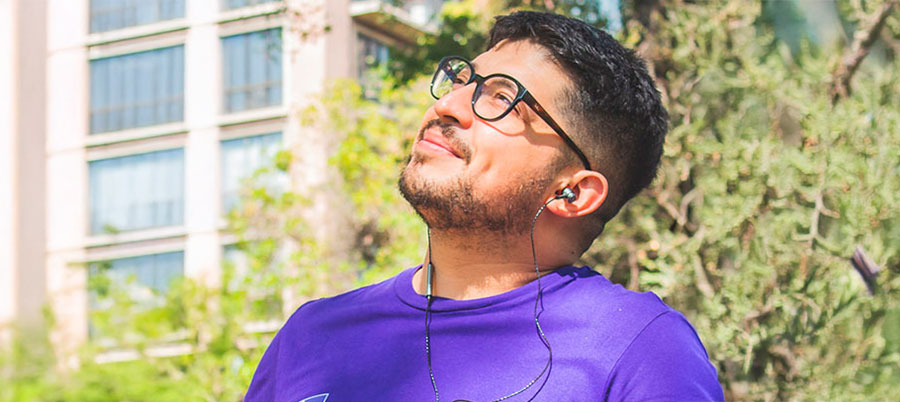
Parque Forestal is a territory deeply embedded with history. The trees there, next to the river, have stood as witnesses to the city’s emergence. Just ask the ancient grove of Oriental plane trees—annoying to some—yet among the oldest tree communities in the area. The project was funded by the Metropolitan Regional Development Fund (FNDR 2024), with support from the National Museum of Fine Arts, the Municipality of Santiago, and Fundación Luz.
“Memory? Memories? In the head? No.
How could we keep memories in the head?
Where do we store memories, then?
Right here—everywhere—like a pile of bark.
That’s where we trees store memories. Layer upon layer.
Sometimes, memory isn’t preserved like a series of images—
it grows as a layer, blooming into bodies, into trunks,
into trees—like a cluster of bark.”


“Árboles Ciudadanos, Quinta Normal” is the third audio walk version, carried out in 2025 in Santiago’s Quinta Normal Park—Chile’s first public park, founded in 1842 and later declared a nature sanctuary in 1976 and a heritage zone in 2009 by the National Monuments Council.
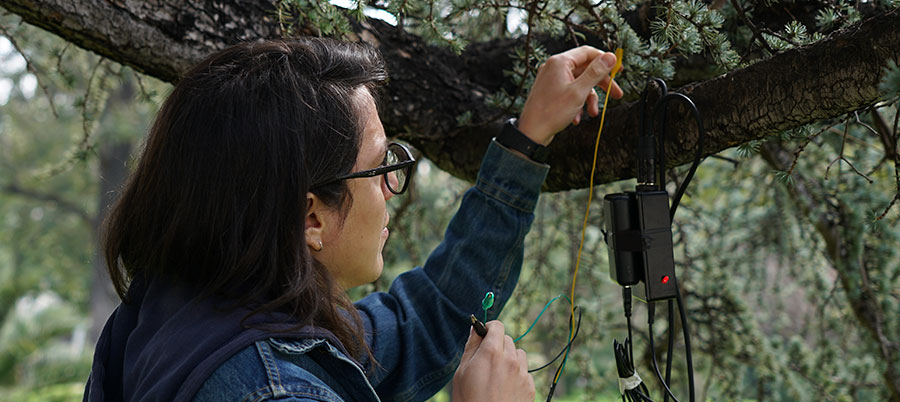
This time, we worked with some of the oldest trees in Santiago, examining species that are the ancestors of many trees planted in other urban public spaces across the city.
We also chose to explore entire tree communities of the same species. Quinta Normal functions like a large forest—and this is precisely how trees live: in large interconnected communities. Trees are not solitary beings. Much like humans, they require relationships in order to survive. So in this version, at each listening station, the audience will hear the voices of entire communities: a chorus of palm trees, a full family of holm oaks, a grove of magnolias, and so on.
Here in the park, listeners will hear whole societies of trees sounding and speaking simultaneously. That’s what makes Quinta Normal so fascinating.
Given the heritage value of the trees being featured, we are working with a cast of actors and actresses who are themselves considered part of Chile’s cultural legacy, whose voices resonate deeply with the character of each tree. Among them: Héctor Noguera, Luz Jiménez, Naldy Hernández, Rosa Ramírez, Elsa Poblete, Tito Bustamante, Alejandro Trejo, Rodolfo Pulgar, and Paulina Hunt.
This version of the project is funded by the Ministry of Cultures, Arts and Heritage (Fondart 2024), with support from Fundación Reforestemos, endorsements from Sernatur, the Ministry of the Environment, the National Cultural Heritage Service, collaboration from the Museum of Memory and Human Rights, and Fundación Luz.
“Trees are also our memory; their bark holds the record of who we’ve been—trees never forget. So it’s not just about giving a tree the voice of an actor or actress; it’s about placing ourselves in conversation with memory—entering into dialogue with our own history”.

Support our project
- Maintaining our current experiences
- Developing future versions of the project
- Caring for and updating our website
- Managing social media and content dissemination
Let's Talk
If you are part of an organization, institution, community, or simply have a proposal you’d like to share with Citizen Trees, we’d love to hear from you. We believe in collaborative work and the possibility of opening up new territories, voices, and journeys.
We are open to new partnerships, ideas, and conversations.